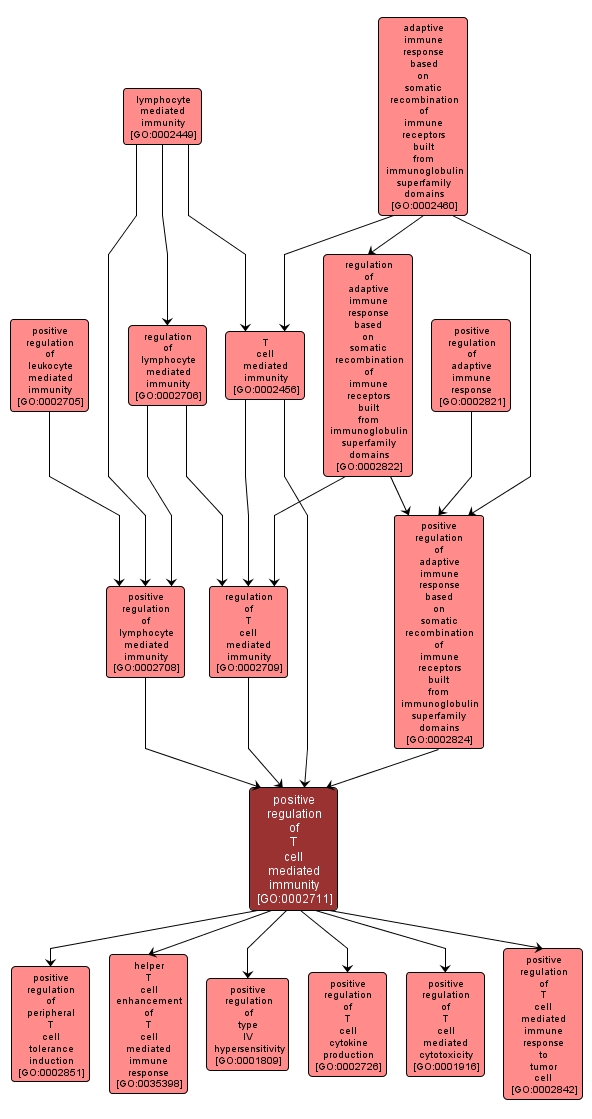GO TERM SUMMARY
|
| Name: |
positive regulation of T cell mediated immunity |
| Acc: |
GO:0002711 |
| Aspect: |
Biological Process |
| Desc: |
Any process that activates or increases the frequency, rate, or extent of T cell mediated immunity. |
Synonyms:
- positive regulation of T-cell mediated immunity
- positive regulation of T-lymphocyte mediated immunity
- upregulation of T cell mediated immunity
- activation of T cell mediated immunity
- up-regulation of T cell mediated immunity
- positive regulation of T lymphocyte mediated immunity
- stimulation of T cell mediated immunity
- up regulation of T cell mediated immunity
|
|

|
INTERACTIVE GO GRAPH
|














